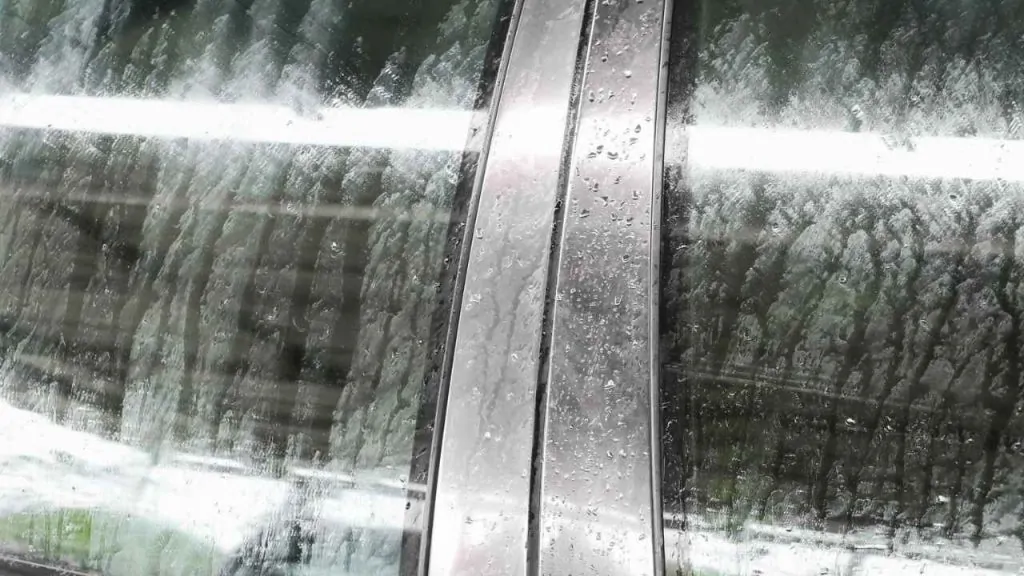Leaving water spots on car paint for extended periods can lead to serious damage. Mineral deposits from hard water, especially in high temperatures, bond to the paint and may etch through the clear coat, causing irreversible harm. Water spots can develop into hard-to-remove etching stains if untreated, making routine washing and drying essential for prevention. Removing them quickly—using safe methods like vinegar solutions, detailing sprays, or professional products—is necessary to avoid costly repairs.
Table of Contents
ToggleDIY Methods to Remove Water Spots
1. Clay Bar Method
The clay bar method is one of the best options for removing contaminants, including water spots, from your car’s surface.
Steps:
- Wash Your Car – Start with a clean surface by washing and drying your car thoroughly.
- Lubricate the Area – Spray a clay bar lubricant on the affected area to prevent scratching.
- Use the Clay Bar – Rub the clay bar over the water spots in gentle, straight-line motions. The clay bar will pick up the mineral deposits and other contaminants bonded to the surface.
- Wipe and Check – Use a microfiber cloth to wipe the area and check for any remaining spots. Repeat if necessary.
Effectiveness: This method is great for removing both light and more stubborn water spots and contaminants without damaging the paint. However, if the water spots are deeply etched, polishing may be required.
2. Vinegar Solution
Vinegar is a readily available and cost-effective solution for treating water spots.
Steps:
- Mix the Solution – In a spray bottle, mix equal parts white vinegar and distilled water.
- Spray on Water Spots – Spray the vinegar solution onto the water spots and let it sit for 1-2 minutes.
- Gently Rub – Use a microfiber cloth to rub the area gently, helping to lift the mineral deposits.
- Rinse and Dry – Rinse the area with water to remove the vinegar and dry with a clean towel.
Note: Vinegar is acidic and can affect the paint if left on too long, so avoid using it frequently or on highly polished surfaces.
3. Commercial Water Spot Remover
There are plenty of commercial water spot removers available, formulated specifically to tackle tough water spots on cars.
Steps:
- Select a Product – Choose a reputable water spot remover, such as Meguiar’s, Chemical Guys, or Turtle Wax, all of which have positive reviews.
- Apply as Directed – Follow the instructions on the product label. Usually, you’ll apply the remover with a microfiber cloth, let it sit for a few minutes, and then wipe away.
- Rinse and Dry – After treatment, rinse the area and dry with a microfiber towel.
Benefits: Commercial products are generally formulated for car surfaces, making them safe and effective, though they may be more expensive than DIY methods.
Professional Detailing
For severe or etched water spots that DIY methods can’t handle, professional detailing is a solid choice. Detailers use advanced polishing compounds, dual-action polishers, and professional-grade spot removers that can safely eliminate even the most stubborn spots. The cost for professional water spot removal typically ranges from $100 to $300, depending on the severity and location, but it can be a worthwhile investment to prevent long-term paint damage.
Preventing Future Water Spots on Your Car

Preventing water spots is much easier than removing them. Here are some best practices:
1. Regular Washing and Waxing
Keeping your car clean prevents mineral deposits from bonding to the paint. Aim to wash your car every one to two weeks and apply wax every three to six months. Wax provides a protective layer that causes water to bead, reducing spot formation.
2. Drying Techniques
Always dry your car with a microfiber towel or a leaf blower. Avoid air-drying, as it can leave water spots. Microfiber towels are highly absorbent and gentle on the paint, preventing scratches and residue.
3. Use Deionized Water for Washing
If possible, use deionized water, which is free from minerals, for washing your car. This helps avoid water spots altogether, as there are no minerals to deposit on the paint.
4. Car Covers
If you don’t have a garage, consider investing in a car cover to protect your vehicle from exposure to rain and sprinklers. Keeping your car covered when parked outside can prevent hard water spots and UV damage.
Expert Tips for Effective Water Spot Removal
- Avoid Abrasive Materials: Never use harsh scrubbing pads or abrasive cleaners, as these can scratch the paint and leave swirls.
- Test a Small Area First: Especially when using DIY solutions, try them in a small area to ensure they don’t react poorly with your car’s paint.
- Choose Products Based on Paint Type: Not all products are compatible with every car paint type, so read product labels carefully.
Frequently Asked Questions (FAQs)
How do I know if water spots are etched or just on the surface?
Etched water spots are usually harder to remove and appear as permanent marks on the paint, while surface-level spots can typically be removed with a wash or vinegar solution.
Can water spots damage car paint permanently?
Yes, if left untreated, water spots can etch into the paint, causing permanent damage. This is especially true if they’re exposed to sunlight and heat over time.
How often should I clean my car to prevent water spots?
It’s best to wash your car at least every one to two weeks, especially if you park outside or live in an area with hard water. Frequent washing prevents mineral buildup that leads to water spots.
Is there a way to prevent water spots completely?
While it’s difficult to prevent water spots entirely, using deionized water, regularly applying wax, and drying your car after each wash can significantly reduce their formation
Does WD-40 Remove Hard Water Spots On Car?
Yes, WD-40 can help remove hard water spots on a car’s windshield and other glass surfaces. However, it’s important to use it cautiously on painted surfaces as it might damage the clear coat. Always test it on a small, inconspicuous area first.
Does Vinegar Remove Water Spots From Car Paint?
Yes, vinegar can be used to remove water spots from car paint. However, it’s necessary to dilute it with water in equal parts and test it on a small, inconspicuous area first to avoid damaging the paint.
If you want to learn more about car cleaning and detailing, you can look more on our website fourwheelsdetail.com

Hi! I’m Harry, With over a decade of experience in car detailing and cleaning, I specialize in restoring vehicles to their pristine best. Passionate about sharing expert tips on fourwheelsdetail.com, I’m here to help readers maintain their cars’ beauty, from paint protection to tackling tough stains.

